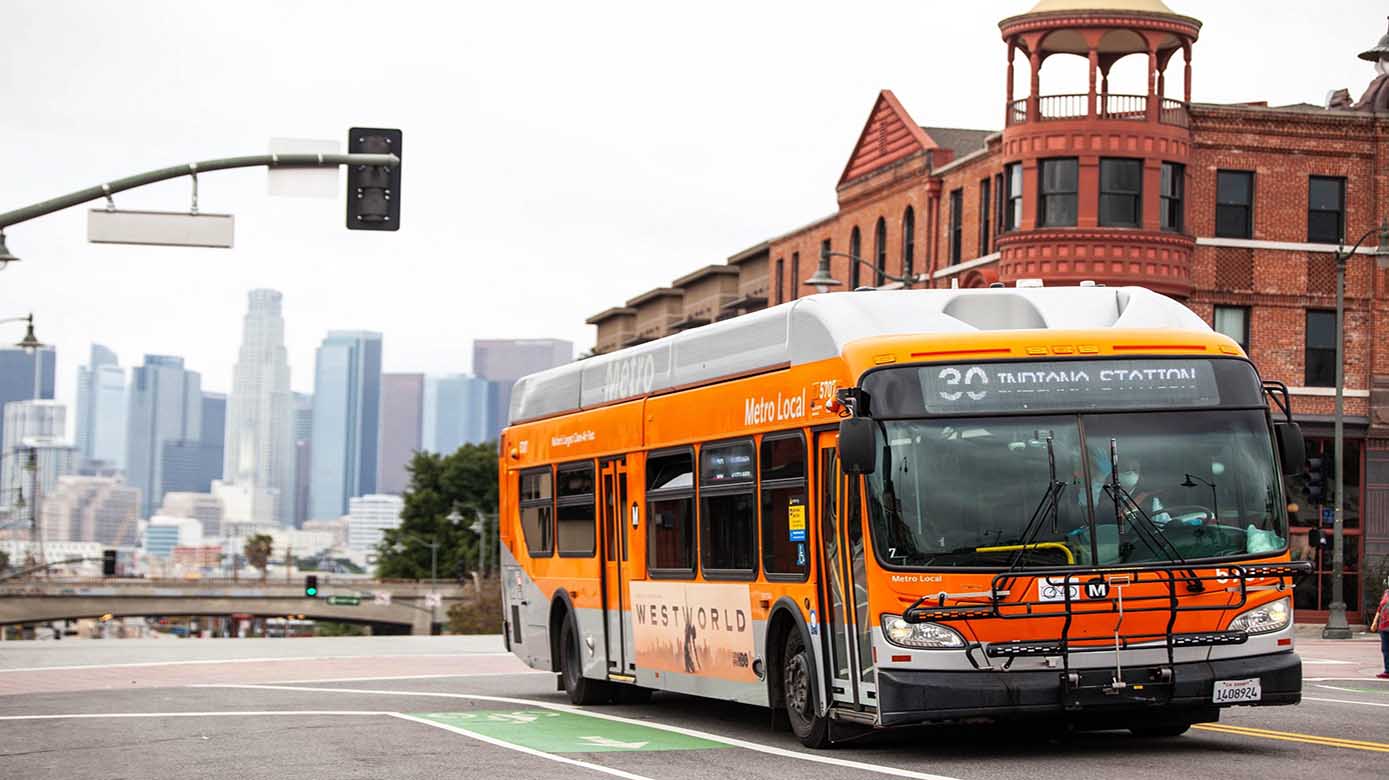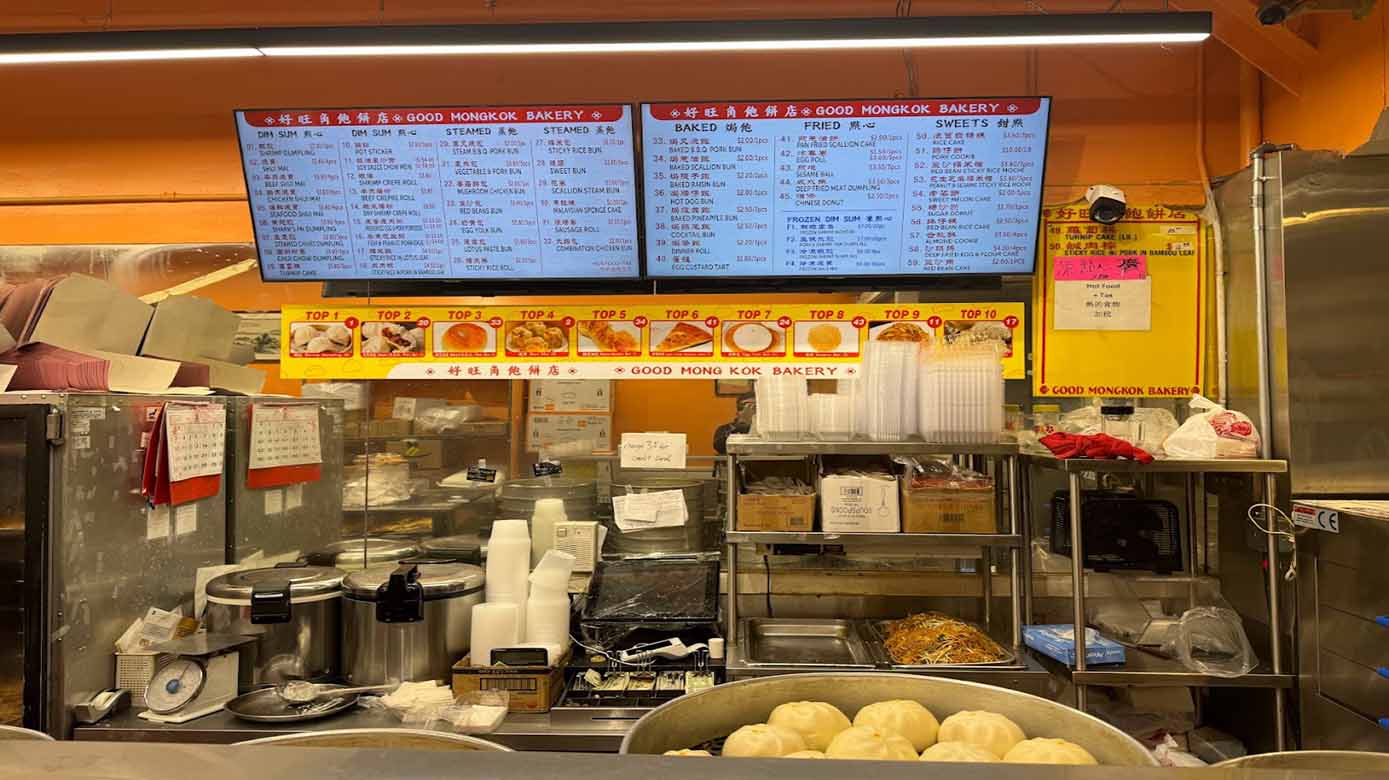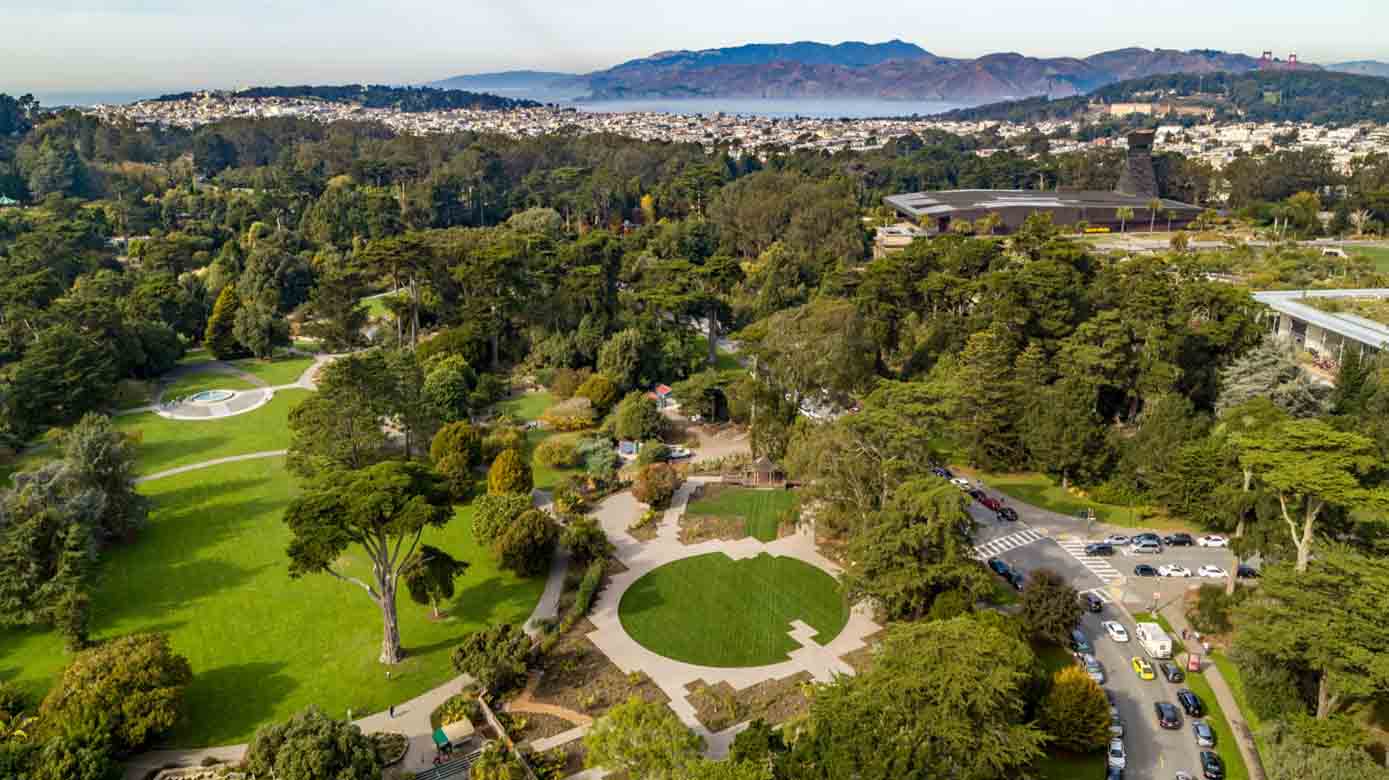Los Angeles is a city that never stops surprising me. Each time I arrive, I notice a new detail about the way it breathes and moves. For so long, I had the impression that Los Angeles was purely a city of cars: freeways stretching endlessly, bumper-to-bumper traffic, and locals clutching coffee cups as they inch their way across the metropolis. That picture isn’t entirely wrong, but over the years, I’ve discovered another side of Los Angeles. Beneath the car-heavy surface lies a public transportation network that’s constantly evolving, along with bike-sharing programs that let me weave through streets in ways no car could ever offer.
The subway, bus, and bike-share options have become my personal key to exploring this city on my own terms. Whether I’m gliding underground to Hollywood, watching the neighborhoods change from the window of a bus, or pedaling along Santa Monica’s palm-lined bike paths, I’ve found freedom that I once thought Los Angeles didn’t have.
In this guide, I want to share my experiences and practical tips so that first-time visitors won’t feel lost. I’ll take you into the subways that surprised me with their efficiency, the bus rides that taught me patience and connection, and the joy of hopping onto a bike-share system that let me stop whenever something caught my eye.
Along the way, I’ll also point out how to make traveling smoother by using online platforms like Expedia for flight bookings, Booking.com and Airbnb for accommodations close to subway stops or bus lines, and OpenTable for reserving restaurants near stations so you can make the most of your journey.
My First Steps into the Los Angeles Metro
I still remember the first time I took the Los Angeles Metro subway. It was early morning, and instead of calling a rideshare to get me to downtown, I decided to walk into the nearest station. The Red Line whisked me from North Hollywood straight into Union Station, and as I stood inside the train, I realized that this was not the Los Angeles I thought I knew.
The subway system is straightforward, with color-coded lines—Red, Purple, Blue, Gold (now known as the L Line), and more. Each line connects neighborhoods that I once thought were only accessible by car. The air-conditioning was strong, the seats surprisingly comfortable, and the ride smooth. For a flat fare, I was able to cover miles without worrying about parking fees or traffic jams.
I learned quickly to buy a TAP card—a reloadable card that makes hopping on and off buses and trains incredibly easy. A single ride costs \$1.75, which still feels like a small miracle compared to parking rates in Santa Monica or Hollywood. A day pass costs \$7, and I often loaded this when I knew my day would be filled with multiple stops.
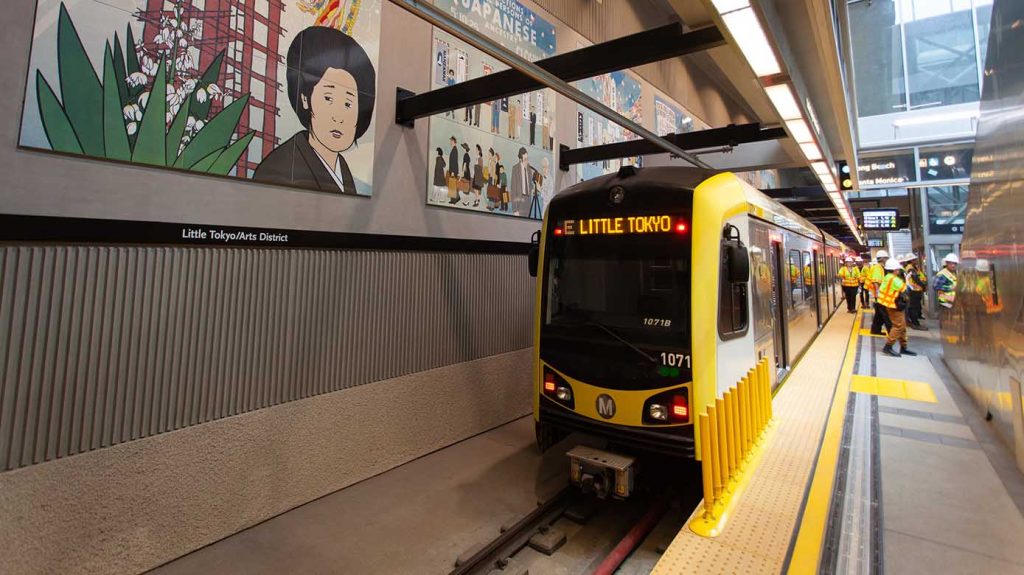
Discovering the City by Bus
The Los Angeles bus system intimidated me at first. The maps looked sprawling, the routes seemed endless, and the idea of figuring out schedules in such a car-centric city felt overwhelming. But once I gave it time and patience, the bus became one of the most revealing ways to experience Los Angeles. It turned out to be more than just a means of transportation—it became a moving window into the soul of the city.
One of my favorite rides is the Metro Rapid Line 720, which stretches along Wilshire Boulevard. The first time I boarded it, I remember sinking into a seat by the window as the bus rumbled forward, the morning light reflecting off the tall buildings. Riding that bus felt like flipping through the pages of a book, each stop a new chapter. We glided past the wide streets of Beverly Hills, where palm trees lined the sidewalks and high-end boutiques teased through glass windows. Then the scenery shifted to Westwood, where groups of UCLA students, backpacks slung casually over their shoulders, gathered at bus stops or darted across the street with coffee cups in hand. Later, the rhythm of Koreatown took over, with its vibrant signage and the aroma of late-night eateries spilling into the air even during daylight. Watching the neighborhoods shift so seamlessly gave me a fuller sense of the city than I ever could have had driving past in a car.
The bus drivers were often friendly, greeting passengers with a nod or even a small joke, and the locals didn’t hesitate to help if I looked uncertain. More than once, someone leaned over to let me know, “Your stop is next,” when they noticed me glancing at my phone. That human warmth made each ride less about the destination and more about the shared experience of moving together through the city. Yes, buses can be slower than the subway, especially when traffic thickens during rush hour, but what they offer is something uniquely valuable: an ever-changing, real-time view of Los Angeles unfolding outside the window.
For long-distance travel, buses like the FlyAway Bus became my go-to connection between Los Angeles International Airport (LAX) and different neighborhoods. I loved the simplicity. After a long flight, instead of dealing with the stress of finding a rideshare or navigating rental car counters, I could hop on at the airport, stash my luggage beside me, and relax into the ride. Whether I was heading into Union Station downtown or out toward Van Nuys in the Valley, the FlyAway gave me a sense of calm efficiency. For under \$10, I could cross the city without any of the usual airport chaos, and stepping off at my stop always felt like I had dodged a headache.
Embracing Bike-Share in Los Angeles
The first time I tried Metro Bike Share, I’ll admit I was nervous. Los Angeles is big, and the thought of biking through a city so famous for its traffic didn’t sound natural at all. But curiosity won, and when I unlocked that bright green bike at a docking station near Downtown, I realized within minutes how liberating it felt. Instead of being trapped in a car, I was suddenly in the open air, gliding through streets at my own pace.
Docking stations are scattered across central Los Angeles, Venice, and Santa Monica, and each one feels like an invitation to hop on and see where the path might lead. The first time I pedaled through Venice Beach, the sun was beginning to set, casting everything in a golden glow. I couldn’t stop smiling as I rode past colorful murals that seemed alive with stories, their details clearer up close than they ever would have been from a car. I stopped for coffee in Abbot Kinney, locking my bike at a station just a block away, then continued along the beach path where rollerbladers, skateboarders, and joggers filled the air with energy. The ocean stretched out endlessly to my right, and the salty breeze on my face made it feel like I was part of the city in a way no other mode of transport had offered me.
A 30-minute ride costs only \$1.75—the same as a bus fare—and a monthly pass became a no-brainer once I realized how often I wanted to ride. The bikes themselves are sturdy and practical, equipped with baskets for carrying snacks, beach towels, or the occasional bag of books from a local shop. Finding docking stations is rarely a problem; the Metro Bike Share app lays them out clearly, and I’ve come to trust it as much as I trust Google Maps.
What I love most about biking in Los Angeles is the freedom it gives me to notice details. I’ve stumbled upon tiny street art pieces hidden on café walls, found a secondhand bookstore tucked into a quiet block, and followed the scent of sizzling tacos from a vendor’s cart until I found myself standing in line with locals. Cars speed past these moments, passengers locked away behind windows. Bikes, on the other hand, invite you to stop, to linger, to interact. And in those pauses, I’ve felt the city open up in unexpected ways—warm, vibrant, and endlessly surprising.
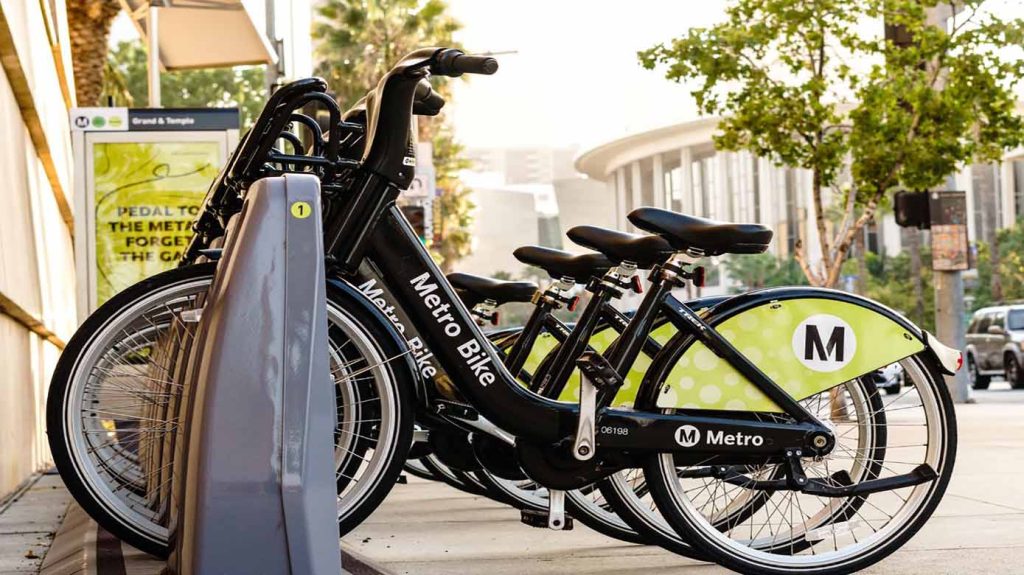
10 Tips for Navigating Los Angeles by Metro, Bus, and Bike
Over time, I’ve gathered practical advice for anyone who wants to explore Los Angeles without relying entirely on a car. Here are my ten detailed tips:
1. Always Get a TAP Card Early
The TAP card is essential for both the subway and bus. I reload mine at Union Station or even online before arriving. Carrying cash is unnecessary once the card is set.
2. Download the Metro App
Schedules can change, especially for buses. The Metro app shows real-time arrivals, helping me avoid long waits at stops. Google Maps also integrates well with Metro schedules.
3. Plan Around Rush Hours
Los Angeles traffic affects buses. Morning (7–9 a.m.) and evening (4–7 p.m.) rush hours can slow rides significantly. I often plan my bus journeys in the late morning or early afternoon for smoother travel.
4. Pair Public Transit with Accommodations
Staying near a Metro station saves time and money. I once booked a hotel near the 7th Street/Metro Center via Booking.com, and it allowed me to reach Hollywood, Santa Monica, and Downtown without calling a car.
5. Try the FlyAway Bus for Airport Transfers
The FlyAway Bus is cheaper than rideshare and far less stressful than navigating traffic myself. At \$9.75 per trip, it’s one of the city’s best-kept secrets.
6. Use Bike-Share for Short Distances
For trips under three miles, biking is often faster than driving. From Union Station to Little Tokyo, biking takes minutes, and I get to enjoy sights on the way.
7. Carry Water and Sunscreen
Whether waiting at a bus stop or riding a bike along Venice Beach, the Los Angeles sun is strong. Staying hydrated is non-negotiable.
8. Explore Neighborhoods by Combining Transit Options
I often take the subway to Hollywood, then rent a bike in Santa Monica. Mixing subway, bus, and bike lets me see more without exhaustion.
9. Use Platforms for Pre-Planning
I often book flights through Expedia or Google Flights to coordinate arrival times with Metro schedules. For restaurants near stations, OpenTable helps me avoid waiting in long lines.
10. Keep an Open Mind
Public transportation in Los Angeles isn’t New York’s subway or London’s Underground. It has quirks, but those quirks often reveal the soul of the city—unexpected conversations, street scenes, and the beauty of slowing down.
The Joy of Moving Through Los Angeles
Every time I step into a subway car, climb onto a bus, or pedal through a breezy bike path, I feel closer to Los Angeles. The city becomes less overwhelming and more human. It’s in those small moments—the bus driver greeting me warmly, the sight of palm trees swaying as I wait for a train, the laughter of kids biking near Santa Monica Pier—that Los Angeles transforms from a sprawling maze into a living, breathing place.
And when I finally sit down at the end of the day, whether in a rented apartment found through Airbnb or a cozy boutique hotel booked on Booking.com, I realize that the way I chose to move shaped the stories I now carry with me.
Travel isn’t only about destinations—it’s about the journeys between them. In Los Angeles, those journeys can be just as rewarding as the places they lead to.
